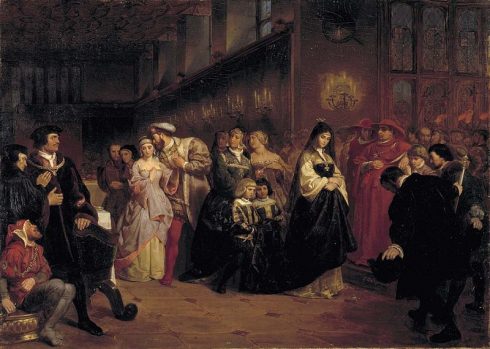C. Protestant Austerity
Another objection to our work could arise from the fact that certain Protestant sects have an austerity verging on exaggeration. How, then, can one explain all of Protestantism as an explosion of the desire to enjoy life?

This painting by Emanuel Gottlieb Leutze, is called The Great Matter. It depicts Henry VIII’s wooing Anne Boleyn in court behind his wife, Queen Katherine of Aragon. Henry VIII divorced his Spanish wife so that he could marry Anne Boleyn, Queen Katharine’s lady-in-waiting. To the left of Henry and Anne, the ambassador from Spain expresses his disgust as he watches the king carry out his affair in public. Painted by Emanuel Gottlieb Leutze.
Even here the objection is not difficult to resolve. When the Revolution penetrated certain environments, it encountered a very strong love for austerity. A “clot” formed. Although the Revolution was entirely successful in the matter of pride, it was not so in the matter of sensuality. In such environments, life is enjoyed by means of the discreet delights of pride and not by the gross pleasures of the flesh. It may even be that austerity, encouraged by an intensified pride, reacted in an exaggerated way against sensuality. But this reaction, however obstinate, is sterile. Sooner or later, through lack of sustenance or by violence, it will be destroyed by the Revolution. The breath of life that will regenerate the earth will not come from a rigid, cold, and mummified puritanism.
Plinio Corrêa de Oliveira, Revolution and Counter-Revolution (York, Penn.: The American Society for the Defense of Tradition, Family, and Property, 1993), Part I, Ch. VI, Pgs. 35 & 36.









